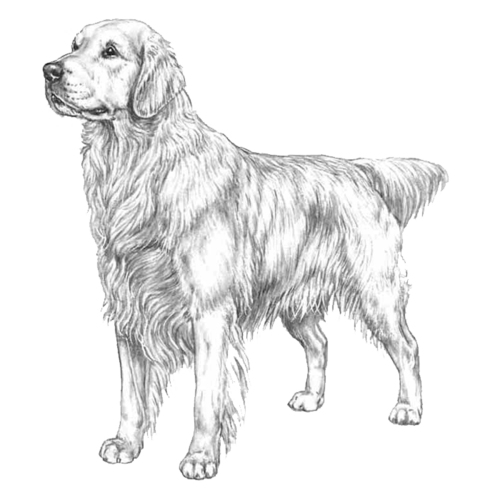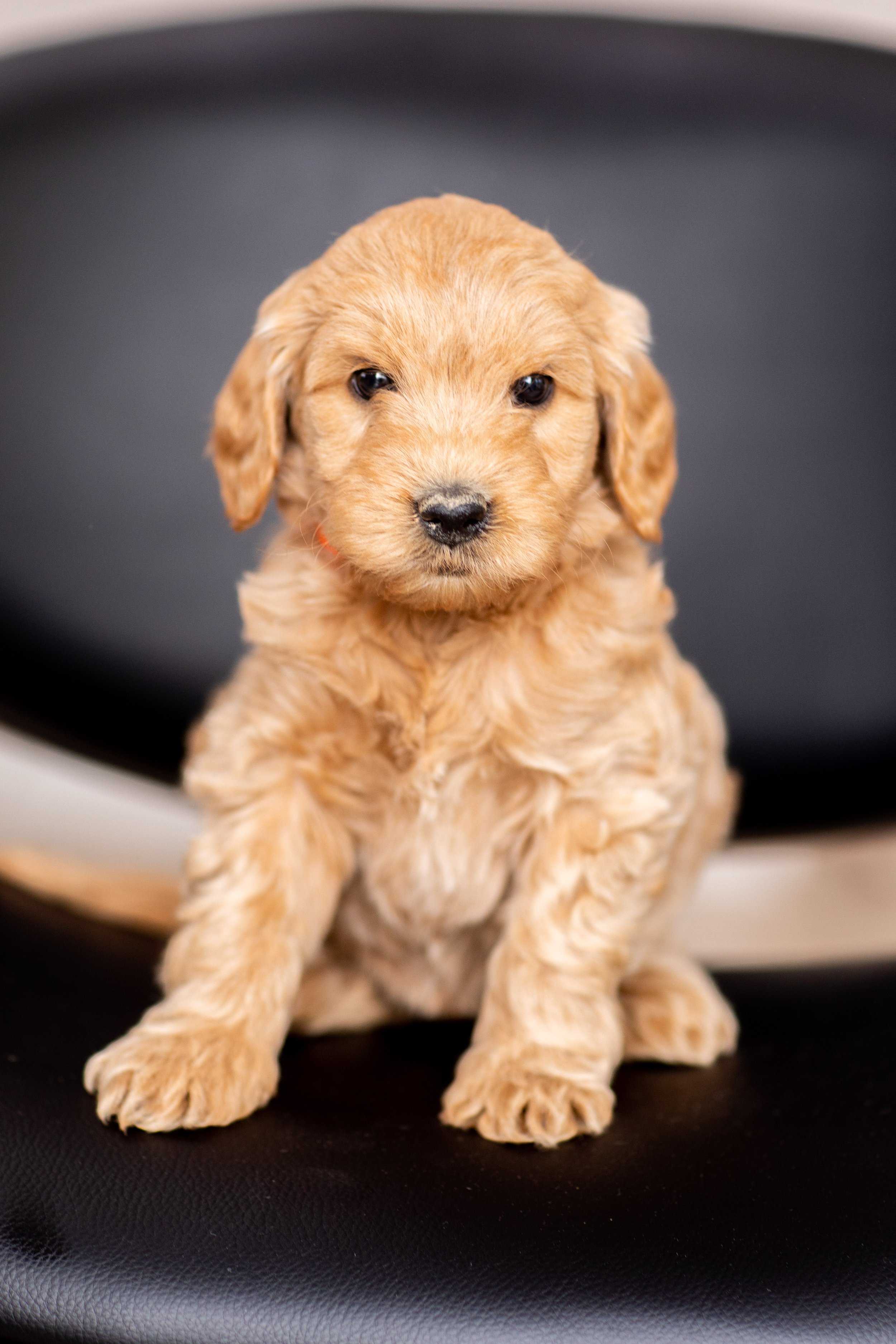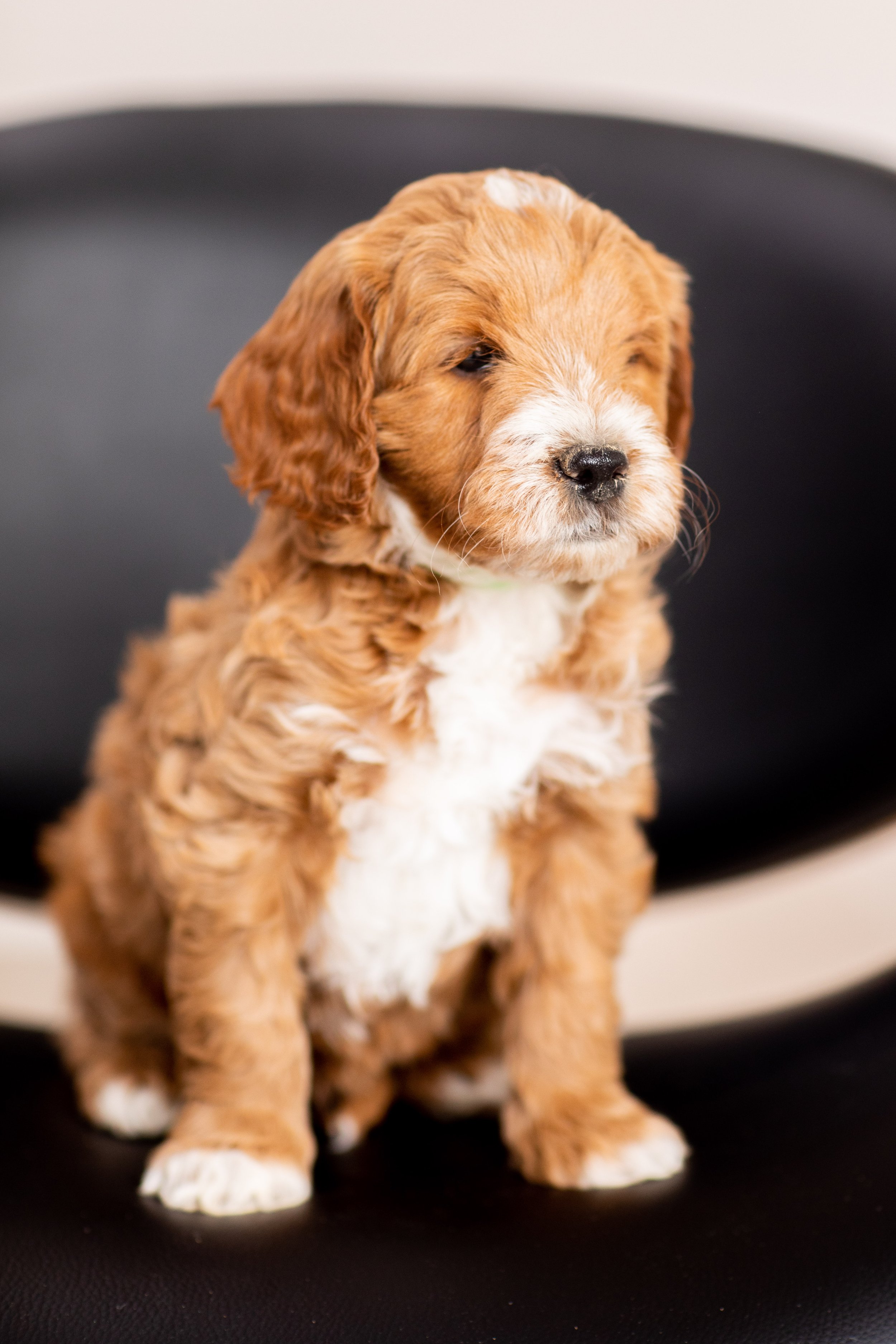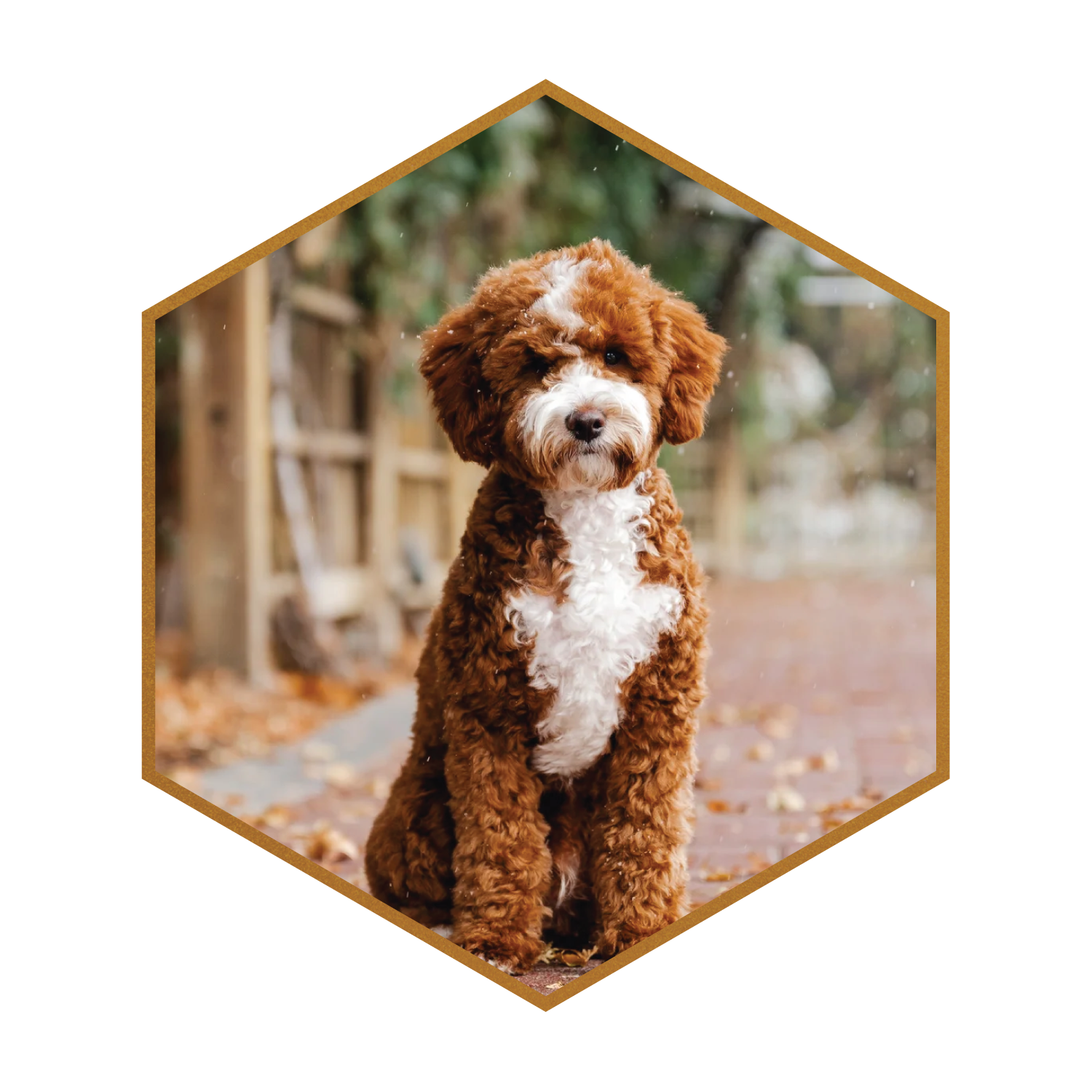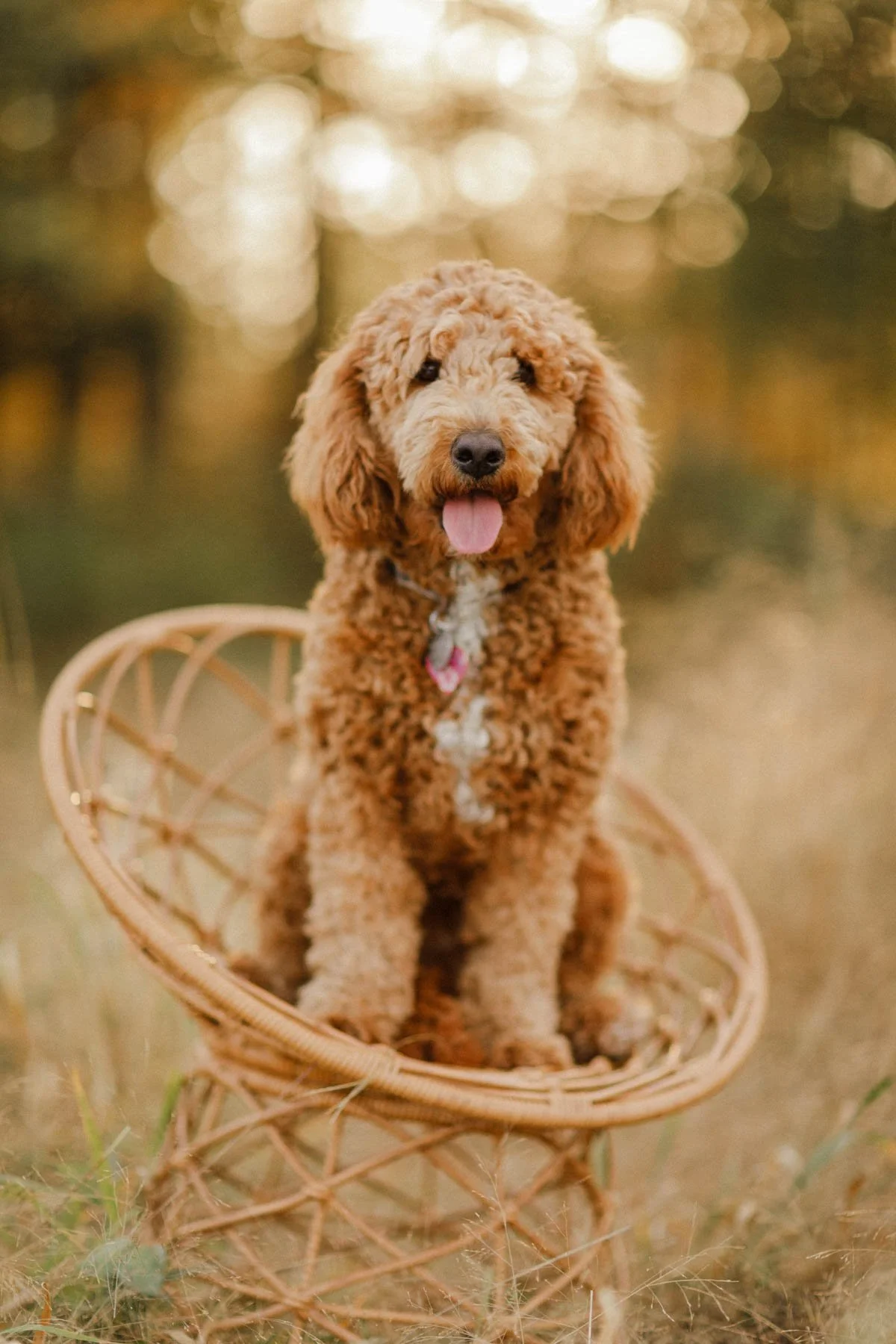What is a Goldendoodle?
“Groodles”
“The Goldendoodle is a friendly, intelligent, and confident breed with a happy expression that is engaging and welcoming to strangers. His loyalty and eagerness to please make him the perfect companion dog, the function for which he is purposely bred.”
goldenDOODLE
BREED TRAITS & CHARACTERISTICS
Height: Varies
Weight: Varies
Lifespan: 10-15 years (smaller sizes tend to live longer)
About Goldendoodles
Goldendoodles: the golden child of the dog world. This breed, popular for its friendly temperament and attractive looks, has captured the hearts of many across the globe, particularly in the Midwest region of the USA, including Wisconsin, Chicago, and the Twin Cities area. But what exactly is a Goldendoodle, and why is this breed so loved, especially by Katie!? Let's dive into the world of Goldendoodles.
A Goldendoodle is a hybrid dog breed that is created by breeding a Golden Retriever with a Poodle. Goldendoodles are known for their friendly and affectionate personalities, and they are often used as therapy dogs or service dogs due to their intelligence and trainability. They are also popular as family pets due to their good nature and ability to get along with children and other pets. Goldendoodles come in a variety of sizes and coat types, ranging from small to large and from wavy to curly. They are generally considered to be intelligent, social, and energetic dogs that require regular exercise and grooming.
The Goldendoodle is a friendly, intelligent, and confident breed with a happy expression that is engaging and welcoming to strangers. His loyalty and eagerness to please make him the perfect companion dog, the function for which he is purposely bred. Since this is not a conformation show breed, his health and calm temperament are equally top priorities; however, proper structure is also essential to overall health, well-being, and breed type. His temperament must be stable and sound under all possible situations while he continues to prove his suitability for service/therapy work. The breed was developed by crossing Poodles and the Golden Retriever, and therefore the physical appearance of this breed is a balanced mix of the traits common to those two founding breeds, which are the only two breeds that comprise the Goldendoodle. To ensure as much genetic diversity as possible, the studbook will remain open and the dogs may be bred from the founding breeds or multigenerational stock. These founding breeds, when combined through multiple generations, present a well-put-together, agile, durable and athletic dog, whose light footedness results in a smooth, fluid gait. Goldendoodles possess a distinct diversity in coat types, colors, and sizes, which is inherited from the parent breeds.
The build of the Goldendoodle is consistent with that of the endurance trotter: slightly longer in the back from the forecast to the point of rump than the height from the ground to the withers. The length of the leg is to be equal to his depth of body. The brisket is to extend down to the center of the back of the elbow.
Adequate bone and muscle are essential for a Goldendoodle's active play style, energy level, and exercise endurance. Their bone substance should be moderate - neither too heavy nor too lightly boned. Their weight should be proportionate to their size, without being overweight or underweight.
Goldendoodles are expected to be friendly, reliable, trustworthy, and well-rounded. They should exhibit stability in most situations and environments, particularly with children, the elderly, and the disabled, as they are often trained as service and therapy dogs. Unwarranted hostility, timidity, nervousness, and/or hyperactivity should never be seen in a Goldendoodle. Dogs that display these temperament faults should not be bred, as a Goldendoodle's temperament is of utmost importance.
Mozzi is an F1 Goldendoodle. Cream Goldendoodles are often mistaken for white Goldendoodles or Labradoodles due to their light-colored coat. However, cream is an official color accepted by the AKC for Poodles, and so we call them cream Goldendoodles. When breeding multi-color coats, cream is commonly used in Parti-Goldendoodles, Merle Goldendoodles, and Phantom Goldendoodles.
Cream Goldendoodles have unique physical attributes, with a wide variation in characteristics. Some have light brown noses, lighter shades of eyes, and lighter toenails. Many cream Goldendoodles have pinkish skin underneath their coat. It's unlikely you'll find two cream Goldendoodles with the same exact features due to the large variation in their physical attributes.
History of the Breed
Goldendoodles are a relatively new breed that first originated in the 1990s as a designer crossbreed between a Golden Retriever and a Poodle. The goal of this mix was to create a dog with the friendly and reliable temperament of the Golden Retriever and the low-shedding coat of the Poodle, making these dogs more suitable for people with allergies. Over time, the Goldendoodle has become one of the most popular breeds, known for its intelligence, friendliness, and low-shedding coat. The Golden Retriever consistently ranks among the top three breeds in the American Kennel Club's popularity rankings, and they are loved for their friendly and tolerant attitudes, making them excellent family pets.
Even as a mixed breed, the Goldendoodle has seen a significant rise in popularity over recent years. Thanks to their Poodle lineage, they have hypoallergenic coats and a friendly disposition, making them a favorite choice for many families. Golden Retrievers are famous for their beautiful, dense, water-repellent coats. They are medium-large dogs, standing at 20-24 inches tall at the shoulder. They are well-mannered, intelligent, and great with kids and other animals.
Goldendoodles can vary more significantly in their appearance due to their mixed breed status. Their size can range from small to large, depending on the size of the Poodle used for breeding. Goldendoodles are known for their curly or wavy coats and their friendly, outgoing, and highly intelligent nature, characteristics inherited from both parent breeds.
Characteristics
Goldendoodles are known for their curly or wavy fur, which can range from light cream to dark gold. They have three main coat types: straight (least common), wavy (most common), and curly (non-shedding). Their sizes can also vary depending on whether a standard, miniature, or toy poodle was used in the breeding.
Apart from their physical characteristics, Goldendoodles are widely adored for their temperament. They're sociable, intelligent, and eager to please—characteristics inherited from both parent breeds. These qualities make them excellent family pets, therapy dogs, and service dogs.
Training
Given their intelligence, Goldendoodles are generally easy to train. However, like all dogs, they require consistent, positive reinforcement training methods. Early socialization is important to ensure they grow up to be well-rounded dogs. Mental stimulation is also crucial for this breed, so puzzle toys and regular training sessions will help keep their minds sharp.
Care Tips
One of the key care aspects for a Goldendoodle is grooming. Their coat needs regular brushing to prevent matting and occasional professional grooming. Bathe them every few months, depending on their lifestyle and coat type.
When it comes to health, Goldendoodles are generally healthy, but they can be prone to certain genetic conditions, including hip dysplasia and certain heart diseases. Regular vet check-ups and a balanced diet are crucial for their wellbeing.
Size, Color, and Generations
Sizes of Goldendoodles
Goldendoodles come in various sizes, colors, and generations. Their size can be classified as standard, medium, or miniature, depending on the size of the poodle parent. Their color can range from cream, apricot, chocolate, to even multicolored.
The term "generation" refers to the genetic makeup of the Goldendoodle. For instance, an F1 Goldendoodle is a first-generation cross between a Poodle and a Golden Retriever, whereas an F1B Goldendoodle is a backcross between an F1 Goldendoodle and a Poodle. Each generation has its own characteristics and may shed less or more than others.
Toy – Height: below 10 inches from the withers to the ground, typically 8-12 lbs.
Petite – Height: over 10 inches but under 15 inches from the withers to the ground, typically 13-18 lbs.
Miniature - Height: over 15 inches but under 17 inches from the withers to the ground, typically 25-35 lbs.
Medium– Height: over 17 inches but under 20 inches from the withers to the ground, typically 35-50 lbs.
Standard – Height: over 20 inches from the withers to the ground, typically 50-90 lbs or more.
Conclusion
Goldendoodles are a popular dog breed, especially in the Midwest region of the USA. They are sociable, intelligent, and don't shed much, making them a great choice for families. Their friendly personality, combined with their hypoallergenic coat, has made them increasingly popular in recent years. If you're thinking about getting a Goldendoodle, you can expect a lot of love, fun, and companionship.
When choosing a breed for owners with special needs, it's important to consider both personality and behavior traits. Goldendoodles have many of the qualities that make a great therapy dog. They are intelligent and easy to train, which makes them adaptable to different tasks. They are also attentive and eager to please, making them responsive to their owners' needs.
Goldendoodles are loyal and social dogs. They enjoy being around people and are excellent companions for individuals who require emotional support. They are known for their gentle nature and patience, which makes them great around children and crowds.
One important quality of a therapy dog is their ability to focus in chaotic environments. Goldendoodles are remarkably calm and composed in busy and noisy surroundings, which is essential for therapy dog work.
Owning a Goldendoodle also offers additional benefits for the owner and those who come into contact with the dog. They shed less and trigger fewer allergic responses, making them a suitable choice for individuals with allergies or sensitivities. This means that the pair can visit different places and interact with people without causing discomfort or health issues.
In conclusion, Goldendoodles possess the personality and behavior traits required to excel as therapy dogs. Their intelligence, easy trainability, attentiveness, loyalty, sociability, gentle nature, patience, ability to focus in chaotic environments, and hypoallergenic coat make them an ideal choice for individuals in need of a reliable and supportive therapy dog.
Selecting a breed that is reliable for owners with special needs involves considering both personality and behavior traits. Goldendoodles are great therapy dogs because they possess many desirable qualities, such as intelligence, easy trainability, and adaptability to various tasks. They are highly responsive to their owners' needs, and their loyalty and social nature makes them excellent companions for individuals who require emotional support. Additionally, Goldendoodles' gentle nature and patience make them well-suited for interacting with children and crowds, while their remarkable ability to remain calm and composed in busy and noisy surroundings is beneficial in therapy dog work.
Furthermore, owning a Goldendoodle offers additional benefits for both the owner and those who come into contact with the dog. Goldendoodles shed less and trigger fewer allergic responses, making them a suitable choice for individuals with allergies or sensitivities. This means that the pair can visit various places and interact with different people without causing discomfort or health issues.
In conclusion, Goldendoodles possess the personality and behavior traits necessary to excel as therapy dogs and great family pets. Their intelligence, easy trainability, attentiveness, loyalty, sociability, gentle nature, patience, ability to focus in chaotic environments, and ability to trigger fewer allergic responses make them an ideal choice for individuals in need of a reliable and supportive therapy dog.

